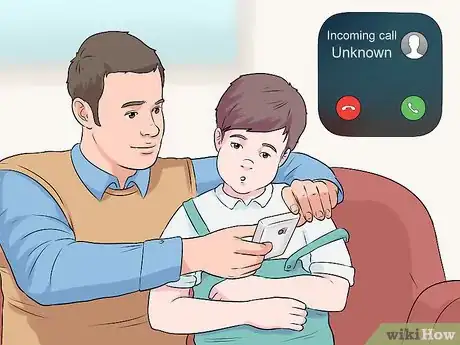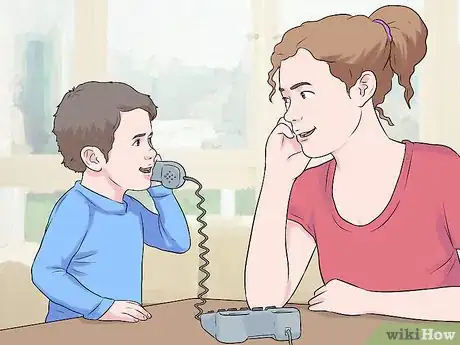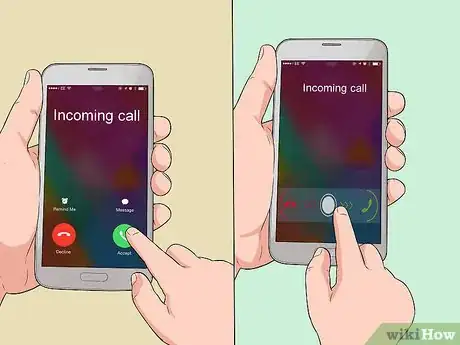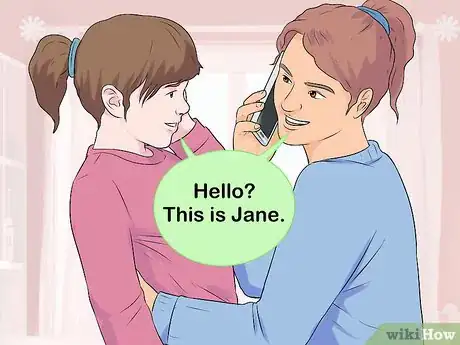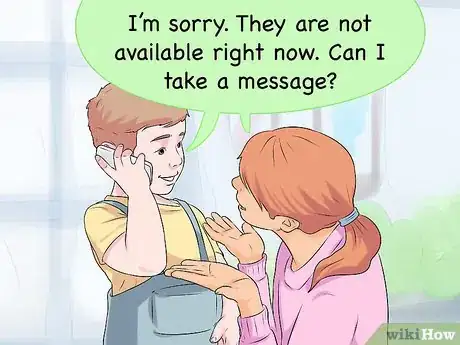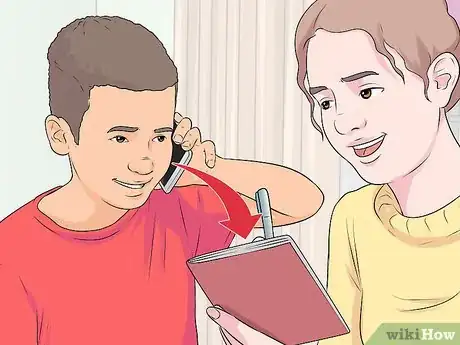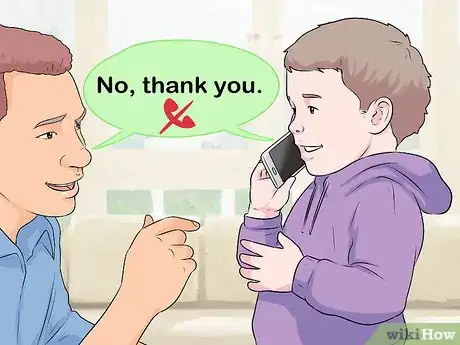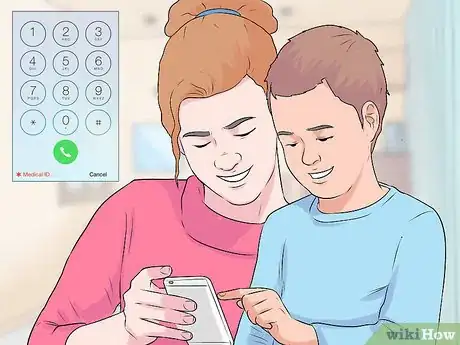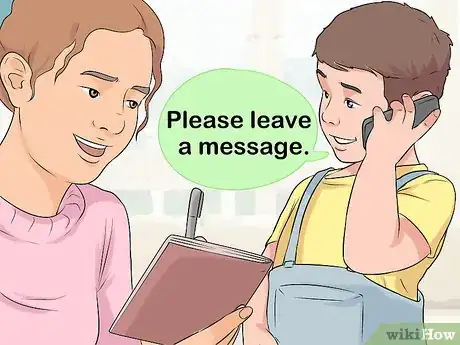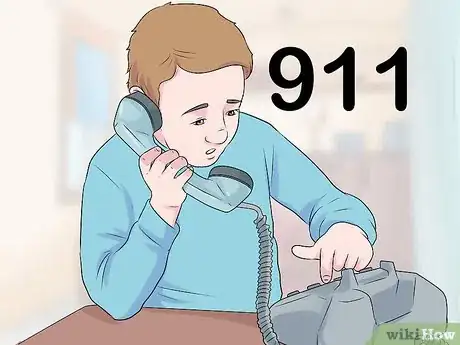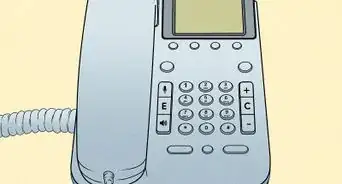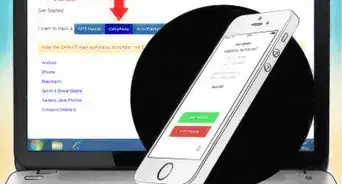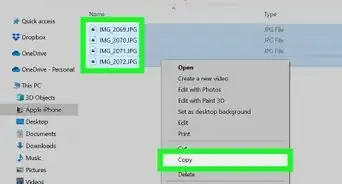X
This article was co-authored by Catherine Palomino, MS. Catherine Palomino is a former Childcare Center Director in New York. She received her MS in Elementary Education from CUNY Brooklyn College in 2010.
There are 10 references cited in this article, which can be found at the bottom of the page.
This article has been viewed 13,475 times.
Teaching your child to answer the phone is a crucial skill. Start by helping your child understand how to receive a call properly. Role-play answering the telephone with your child several times to help them get the hang of it. By the end of your training, your child should be able to answer the phone in a polite way and even take messages.
Steps
Method 1
Method 1 of 3:
Showing Them the Process of Answering
-
1Show them how to use caller ID. All cellular and digital phones will show the number of the person who is calling. Some home phones can be equipped with a caller ID device, too. If the phone or phones your child is most likely to answer are equipped with this device, instruct your child to look at the caller ID and use the information to decide if they want to answer the phone.
- If you wish, you could teach your child to only answer the phone if the incoming call is from a certain number (yours, for instance).
- Show your child how to see the phone numbers from past calls as an alternative to having them write the numbers down,
-
2Demonstrate how to pick up a landline phone. When a call comes in on a landline phone, accessing the caller is as simple as lifting the phone from the receiver. After picking it up, they should place the earpiece near their ear and the mouthpiece near their mouth.
- Tell them that if they imagine the phone as a “C,” the earpiece is the portion that is curving out and away from the top of the phone.
- Make sure your child knows how to properly hang up the phone.
Advertisement -
3Teach them how to answer a cell phone. When answering cellular phones, there is often a button you must press or a technique you must utilize in order to access the caller. For example, you might have to press a button labelled, “Accept,” or swipe your finger across the phone’s digital screen.
-
4Show your child how to take a call when they are already on the line. Explain to your child that sometimes, in the middle of a phone conversation, someone else might call them. In this case, the phone will make a sound – sometimes, one beep, sometimes, two or even three. Tell your child that if this occurs, they should check the caller ID and let the person they’re speaking with know that they have an incoming call.[1]
- Typically, it is possible to switch between calls simply by pressing the “Accept” button or performing the action that enabled them to answer the phone initially.
Advertisement
Method 2
Method 2 of 3:
Instructing Them in What to Say
-
1Model good behavior. After your child has gained access to the caller, they will need to learn how to address the person on the other end. Showing your child how to answer the phone is the best way to help them learn. You could show them directly by play-acting or actually answering the phone.[2]
- You could, alternatively, choose to show them an instructional video of people answering the phone.
-
2Show them how to greet the caller. Instruct your child to say “Hello?” in a friendly manner. Use an upward inflection at the end of the word. Alternately, train them to say, “This is [child’s name].” This method will let speakers know straight away exactly who they have on the line.[3]
-
3Teach them what to say if you’re not around. If you are indisposed, instruct your child to communicate to callers that you are busy or cannot come to the phone. Tell your child to say, “I’m sorry. They are not available right now. Can I take a message?” Encourage your child to make a note of the caller’s phone number as well as a short message.[4]
- Do not tell your child to lie, as they might be confused or bungle the lie.
- Teach your child what to say if they are asked if you are home are not. Tell them not to reveal that they are home alone.
-
4Demonstrate how to take a message. After answering the phone, your child might find that the caller wishes to speak with someone who is unavailable. Instruct your child that in these instances, they should offer to take a brief message. Explain – then demonstrate – how they can take a message by using their free hand to transcribe the information being relayed by the caller.
- Leave a pen and paper near your home phone to facilitate this process.
- Teach your child that in the event they do not have pen and paper on hand, they should say to the caller, “Please wait a moment while I fetch pen and paper.” Tell them that they should then set the phone down (without hanging up) and obtain something to write with before returning to the phone.
- Encourage your child to read the message back to the person who called so as to avoid any confusion later.
-
5Explain how to deal with telemarketers or possible scams. Direct your child to always ask who they are calling for and who is calling. Explain that if the person does not answer the questions, they should say, “No thank you,” and hang up the phone.[5]
- Additionally, command your child to be wary of anyone speaking quickly. Many phone scammers and telemarketers speak quickly to pressure the person on the other end of the line to give away information.
- Remind your child to never share personal info over the phone with anyone who they do not know.
- Urge your child to always turn the phone over to you if the caller confuses them.
Advertisement
Method 3
Method 3 of 3:
Teaching Your Child How to Place a Call
-
1Show your child how to enter a phone number. Explain to your child that every phone has a unique number, and placing calls requires knowing this phone number. The way this phone number is entered will vary slightly depending on the phone.[6]
- Allow your child an opportunity to enter phone numbers on their own. Remind them that when they’ve entered a phone number properly, they will hear a ringing sound when they place the phone’s earpiece against their ear.
-
2Instruct your child to speak to the person who answers the phone. Once someone on the other end of the line picks up and acknowledges the call – usually by saying “Hello?” – your child should respond. How your child responds depends on who answers.[7]
- Tell your child that if the person they wish to speak with answers, they should introduce themselves. If the person who answered is someone who would immediately recognize their voice, they might just say, “Hi, it’s me” in a casual way.
- Teach your child that if the person who answers would not immediately recognize their voice, they should introduce themselves more fully. For instance, they might say, “Hello, my name is [child’s name],” then communicate their message.
-
3Suggest to your child that they leave a message. If the person your child wished to get ahold of is indisposed, they might be able to leave a message. This could occur through an automated feature or through an intermediary.[8]
- Explain to your child that if nobody answers the phone when they call, or if someone answers who they do not wish to converse with, they can leave a message.
- For instance, your child might leave a message along the lines of, “Hello. This is [child’s name]. Please return my call when you can. My number is [child’s phone number]. Thank you.”
-
4Teach them how to make an emergency call. When your child is learning to place calls, they should also learn how to contact emergency services. This process varies by location. For instance, in the U.S., they should dial 911. In the U.K., they should dial 999. Identify the process for contacting emergency services in your area and teach your child to do likewise.[9]
- Share with your child the situations under which it would be appropriate to place an emergency call – that is, if there is a fire, if their parents or someone else is unconscious, or if an intruder is in the house.
- Additionally, to prevent confusion, provide them with a few examples of occasions when it would not be appropriate to contact emergency services – that is, when they’ve spilled their juice or when they’ve lost their favorite toy.
- Ensure that your child has their address and parent’s phone numbers memorized in case there is an emergency.
Advertisement
References
- ↑ https://support.polycom.com/content/dam/polycom-support/products/voice/business-media-phones/user/en/vvx-300-310-userguide-ucs-4-1-4.pdf
- ↑ https://www.babycenter.com/0_how-to-teach-your-child-good-phone-manners_10305055.bc
- ↑ https://www.babycenter.com/0_how-to-teach-your-child-good-phone-manners_10305055.bc
- ↑ https://www.babycenter.com/0_how-to-teach-your-child-good-phone-manners_10305055.bc
- ↑ https://www.consumer.ftc.gov/articles/0076-phone-scams
- ↑ http://www.parents.com/kids/development/social/how-to-teach-social-skills/
- ↑ http://www.parents.com/kids/development/social/how-to-teach-social-skills/
- ↑ http://www.dummies.com/relationships/raising-children/phone-etiquette-and-safety-guidelines-for-children/
- ↑ http://kidshealth.org/en/parents/911.html
About This Article
Advertisement
